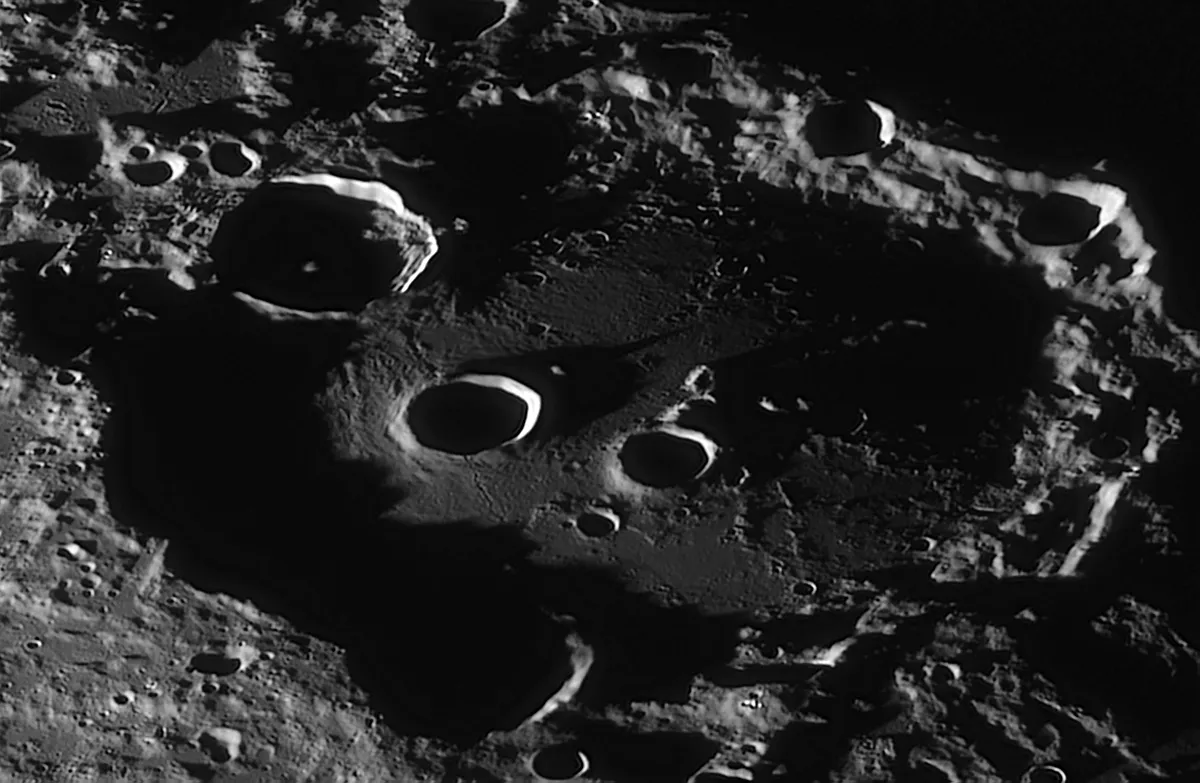The Moon has been skirting close to the Pleiades open cluster for several months, sometimes passing across some of its outer members.
On 1 April, starting under conditions of deep twilight, from the vantage location of the UK the waxing crescent Moon passed across the cluster’s core, occulting most of the brighter members.
If you saw it and captured an image, we'd love to see it! Find out how to submit your images at the bottom of this article.

And if you're wondering what the Moon is up to for the rest of the week, it will be meeting Jupiter then Mars.
The Moon will be further from the Pleiades this evening, 2 April, but instead will be close to the planet Jupiter in the night sky.
And on 5 April, the planet Mars will be right below the Moon, making for a great photo opportunity
The Pleiades and the Moon meet
As of early April, the Pleiades still has a decent altitude as darkness falls.
On 1 April at 21:00 BST (20:00 UT) under darkening twilight, the Pleiades was 30° above the western horizon.
At the end of the month, under similar lighting conditions at 22:20 BST (21:20 UT), their altitude drops to just 4°.

The Moon was a 16%-lit waxing phase on 1 April. This meant the brightness of the Moon’s disc wasn't sufficient to drown the brighter stars of the Pleiades cluster.
Consequently, the Moon’s approach to the Pleiades was just about visible with the naked eye.
Binoculars showed the approach and occultations really well, as did a small telescope using a low-power eyepiece.

A matter of perspective
As with other such instances where two celestial bodies appear close to each other in the night sky, the Moon isn't actually be anywhere near the Pleiades.
The Pleiades cluster is 444 lightyears from Earth. The Moon, on the other hand, is much closer at around 360,000km away at the time of the occultation.
The Moon only appears to pass in front of the Pleiades from our pespective.

But as a consequence, different locations within the UK experience different occultation timings, due to lunar parallax.
This is the apparent shift in the Moon’s position relative to a more distant body when seen from varying locations.
The timings shown here are for the centre of the UK.
Those who live further north saw the Moon’s apparent position shift further south relative to the cluster; those to the south saw the Moon shift slightly north.
Take a closer look at the Moon
There are plenty of other Moon-related events to see in April 2025, including several Moon–planet conjunctions and several interesting clair-obscur events.
For example, on 6 April at 03:00 BST (02:00 UT), there’s the Stars of Aristillus, a lunar dawn event where mountain peaks in the crater Aristillus resemble a star cluster.

The Eyes of Clavius effect is visible later that day around 18:35 BST (17:35 UT) and Plato’s Hook at 23:40 BST (22:40 UT), also on 6 April.
Find out more in our guide on what to see in the night sky tonight.
If you did observe or photograph the Moon passing in front of the Pleiades, share your experience and images with us by emailing contactus@skyatnightmagazine.com
